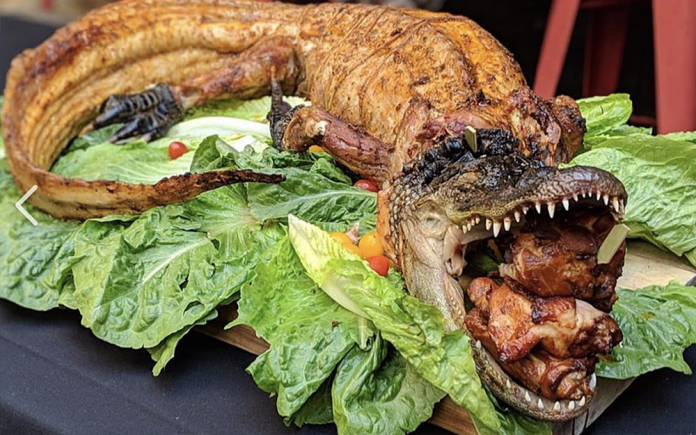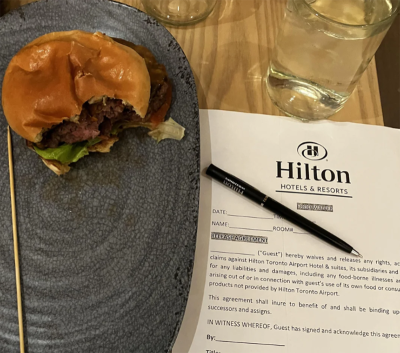
By Haddon Libby
People eat the strangest things.
Anyone who has been to the South has heard of, if not tried, fried green tomatoes. In South Korea, people have taken to eating fried green toothpicks! The Ministry of Food and Drug Safety states that they have not tested toothpicks as a food and advise citizens to reconsider the snack.
This Tik-Tok-like trend came about as the country uses a starch-made toothpick versus the wooden or plastic ones that we use. People began frying the sweet potato or corn starch covered toothpicks in oil resulting in a ‘treat’ that curls and looks like a thin green cheese puff. Snackers then coat these fries in a cheesy powder.
Where South Korea warns against eating toothpicks, a hotel in Canada requires a health waiver to eat a hamburger.
The Hilton Hotel at the Toronto Airport in Canada recently required a visitor to sign a release form in case he became sick from the food they served him. The issue came about as the diner ordered a medium-cooked burger meaning that it had a slightly pink center. Two bites into the burger, the server returned with a food waiver form that required the customer’s signature to finish his burger. The diner did not sign the form but paid, left and posted the incident on Reddit.
In its defense, the Hilton stated that typically serve burgers that are well-done to avoid any food-borne illnesses that may come from the internal temperature of the meat being too low to kill bacteria. The liability waiver comes about as the Ontario province has laws on the books requiring eateries to prevent ecoli outbreaks. Most restaurants in province will not sell a burger that is not well done.
While medium-rare burgers are common in the United States, so too are a host of other novel foods.
During the late 1800s, Basque immigrants came to the United States and joined in the great migration west. With many becoming sheep herders, lamb fries were developed from the parts of the lamb that were not sold. Strips of lamb balls were breaded and fried like the Canadian dish, Rocky Mountain Oysters which come from bulls.
Down Louisiana or Florida way, people have takin’ a hankering for alligator meat. Fried or grilled, the gator tail is considered the filet mignon of this reptile. If you are ever near the Everglades and want to try some gater, most eat the beast fried like catfish or chicken strips and served with fries. At the Oceana in the French Quarter of New Orleans, you can get gator tail bites fried or blackened and served with a Remoulade sauce.
 Another local dish to Louisiana is Nutria meat aka river rats. A nutria looks a bit like a beaver-guinea pig-porcupine animal and shares a genealogical tree as a rat. The Exotic Meat Market with sell you a pound of boneless nutria meat for $50. Supposedly, the meat tastes like rabbit or a cross of turkey and pork. As far as I can tell, no restaurants serve this exotic meat.
Another local dish to Louisiana is Nutria meat aka river rats. A nutria looks a bit like a beaver-guinea pig-porcupine animal and shares a genealogical tree as a rat. The Exotic Meat Market with sell you a pound of boneless nutria meat for $50. Supposedly, the meat tastes like rabbit or a cross of turkey and pork. As far as I can tell, no restaurants serve this exotic meat.
The home of Colonel Sanders and Kentucky Fried Chicken is also known for its fried squirrel. Chef Paul Wedgewood says the meat has a “mellow, nutty” flavor.
In Alaska, you can order Akutaq. Also known as Eskimo Ice Cream, Akutaq can be a mix of virtually anything edible. Some can be dessert while other versions are more savory or downright bizarre. Ingredients range from various berries and lavender to whitefish eggs, seal or whale oil and fats from a caribou, moose, bear or muskox. Mixed with snow and sugar, you have Eskimo Ice Cream
Haddon Libby is the Founder and Chief Investment Officer of Winslow Drake Investment Management. For more information on our services, please visit www.WinslowDrake.com.











































